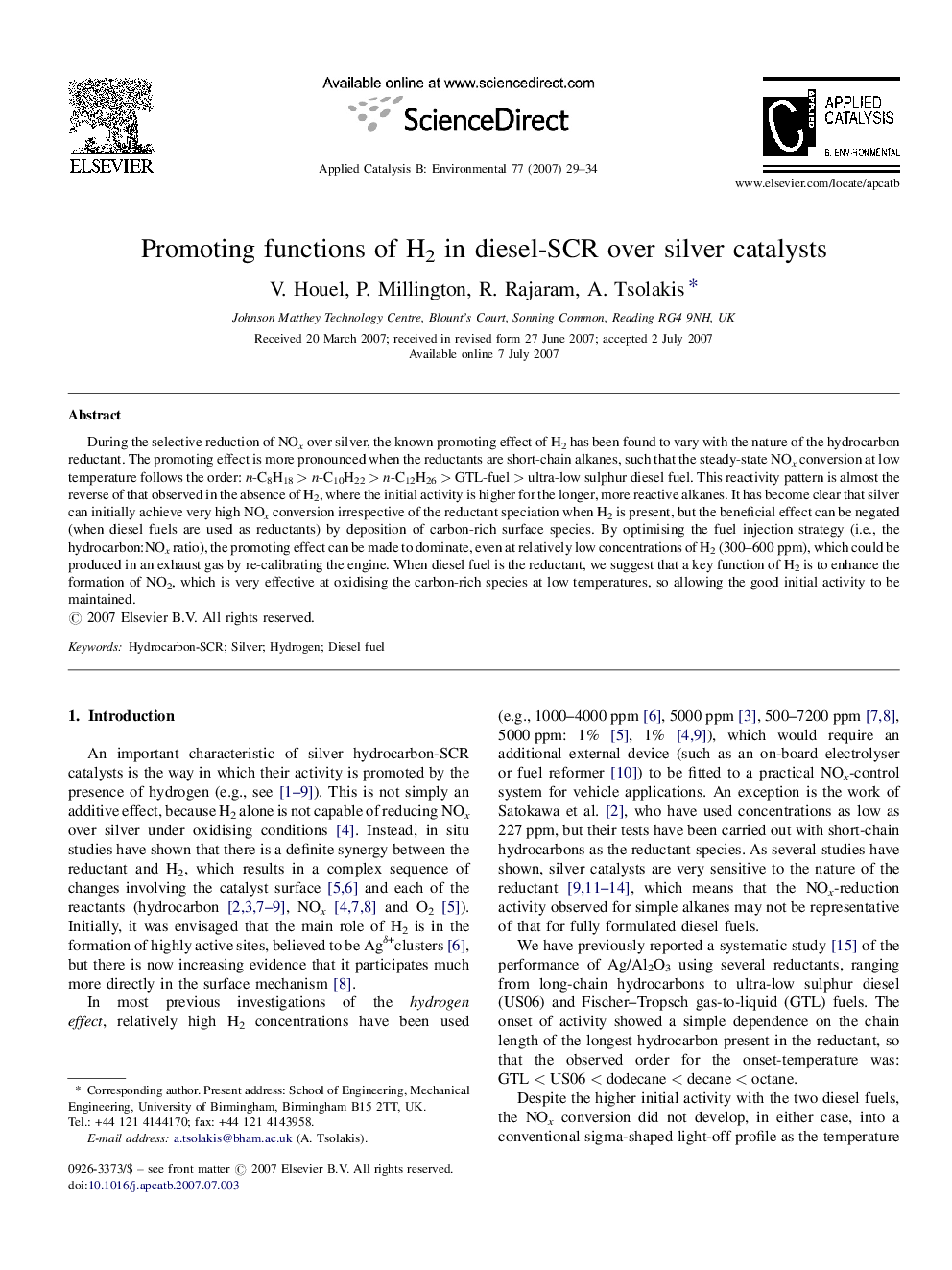| Article ID | Journal | Published Year | Pages | File Type |
|---|---|---|---|---|
| 48633 | Applied Catalysis B: Environmental | 2007 | 6 Pages |
During the selective reduction of NOx over silver, the known promoting effect of H2 has been found to vary with the nature of the hydrocarbon reductant. The promoting effect is more pronounced when the reductants are short-chain alkanes, such that the steady-state NOx conversion at low temperature follows the order: n-C8H18 > n-C10H22 > n-C12H26 > GTL-fuel > ultra-low sulphur diesel fuel. This reactivity pattern is almost the reverse of that observed in the absence of H2, where the initial activity is higher for the longer, more reactive alkanes. It has become clear that silver can initially achieve very high NOx conversion irrespective of the reductant speciation when H2 is present, but the beneficial effect can be negated (when diesel fuels are used as reductants) by deposition of carbon-rich surface species. By optimising the fuel injection strategy (i.e., the hydrocarbon:NOx ratio), the promoting effect can be made to dominate, even at relatively low concentrations of H2 (300–600 ppm), which could be produced in an exhaust gas by re-calibrating the engine. When diesel fuel is the reductant, we suggest that a key function of H2 is to enhance the formation of NO2, which is very effective at oxidising the carbon-rich species at low temperatures, so allowing the good initial activity to be maintained.
